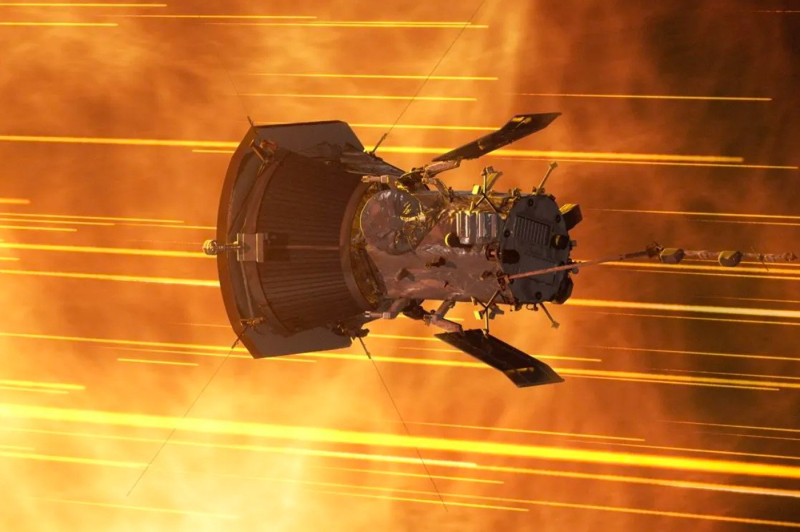
The Parker Solar Probe © NASA
NASA's Parker Solar Probe achieved an unprecedented feat by reaching the dizzying speed of 635,266 km/h (or 394,736 miles/hour) as it approaches the sun. It also broke the distance record by coming only 7.26 million km from the solar surface, explains NASA on its blog.
This probe is the first NASA mission to explore the sun. Launched on August 12, 2018 (see Twitter video below), its objective is to study the corona of the sun which is the outermost layer of its atmosphere. To get closer to the sun, the probe uses the gravitational assistance of Venus which allows it to lose part of its orbital energy and modify its trajectory.
176 km per second
This last flyby allowed the probe to reach a record speed on September 27, during its seventh pass near the sun. According to NASA experts, it reached the astonishing speed of 635,266 km/h, or approximately 176 km per second! This speed shatters its previous record of 586,863 km/h which was established in November 2021.
For comparison, the average speed of an airliner is around 900 km /hand that of a rifle bullet is around 1,500 km/h. The Parker Probe is officially the fastest man-made object in history. And it could stay that way for a little longer with a new flyby/record which is expected at the end of the year.
In parallel with this speed record, the probe set a distance record by coming only 7.26 million kmfrom the solar surface. This is about five times the diameter of the sun, or about 19 times the distance between Earth and the Moon. This distance is very small compared to the scale of the solar system and exposes the probe to extreme temperatures and very intense radiation.
A scientific exploration mission
The Parker probe's mission is to study phenomena that occur in the sun's corona, such as solar flares or solar winds. These phenomena can have impacts on space weather… but also on terrestrial technological systems.
By getting as close as possible to the sun, the American probe can collect new data on the movements of heat through the corona as well as on variations in magnetic fields and plasma on the surface of the sun. This data will allow scientists to better understand how the sun works and to better anticipate its effects on our planet.
The Parker probe mission must continue until 2025, and it foresees eleven more passages near the sun. The next flyby is scheduled for December 16, 2023, at a planned distance of 6.16 million km from the solar surface. On this occasion, the probe should reach even higher speeds. See you at the end of the year to find out more!
[ ]

